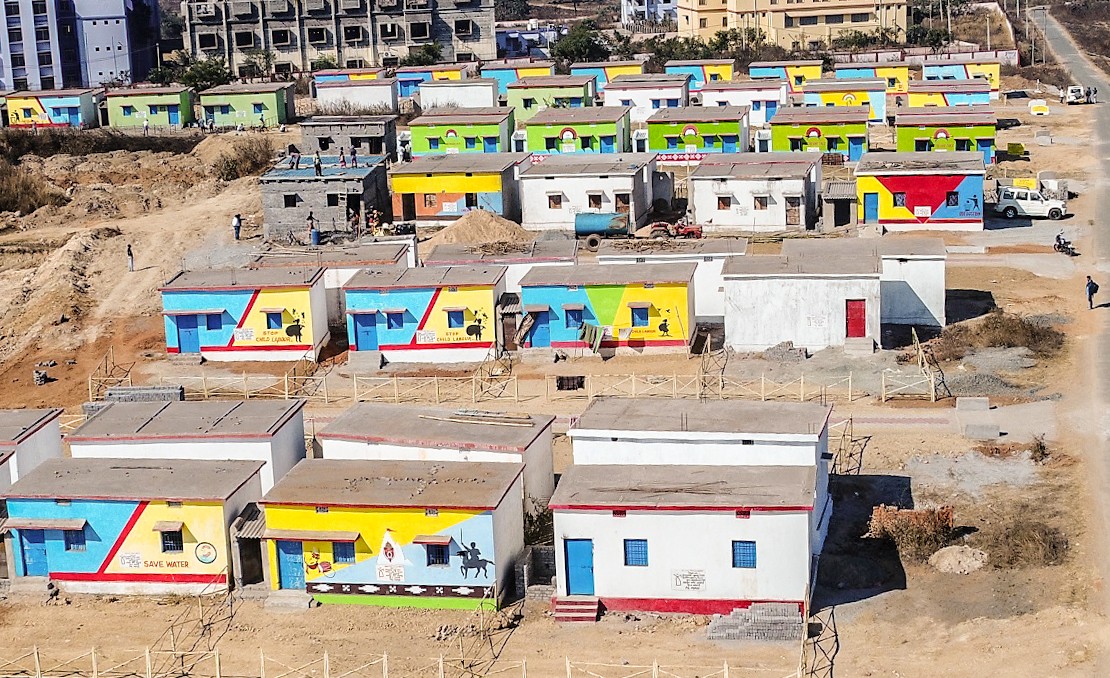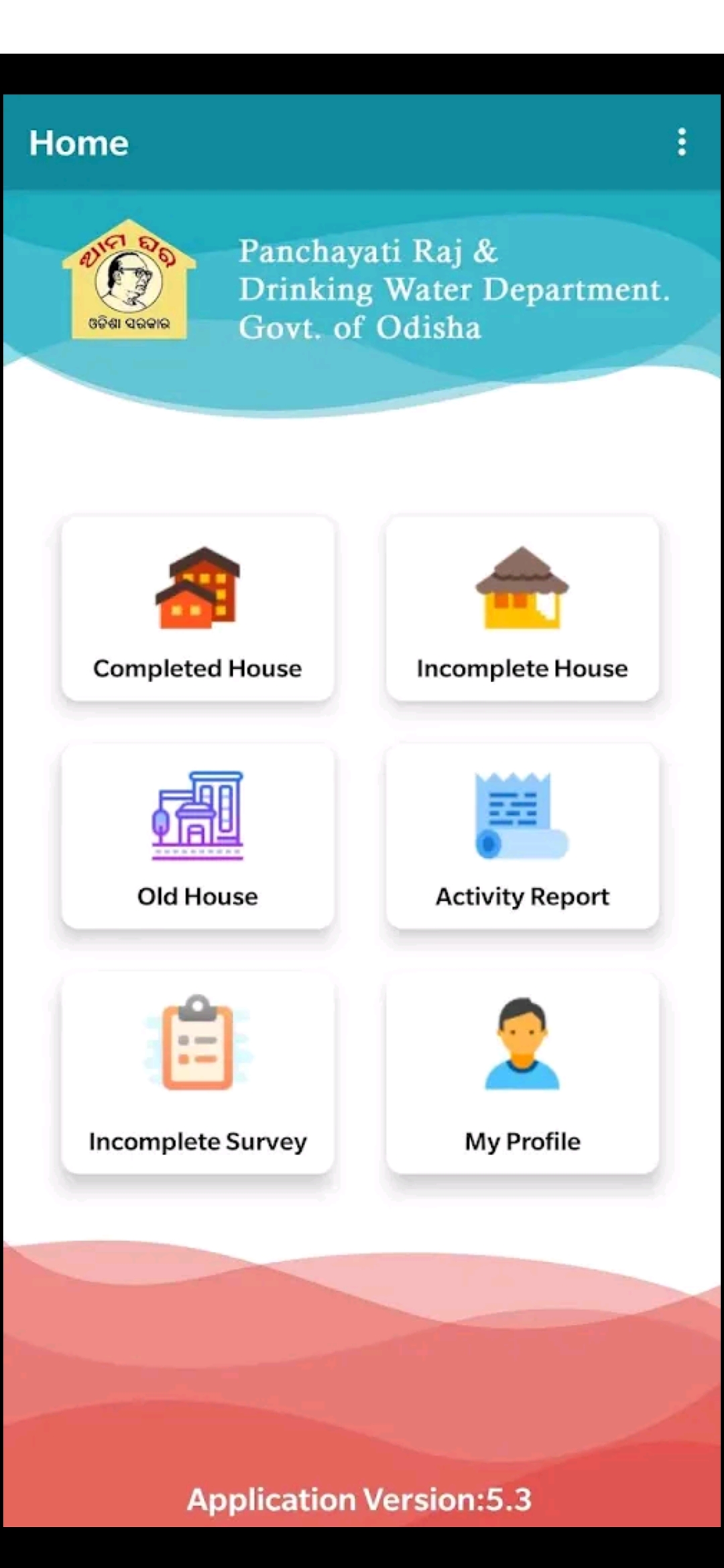Millions of new houses constructed under the rural housing scheme in Odisha has saved lives and livelihoods of vulnerable communities living in poverty. Transparency, technology, teamwork, timeliness, and transformation has brought about ground-breaking results.
Odisha’s affordable and disaster resilient houses
August 4, 2022

Newly constructed houses in Odisha.
For decades, cyclones have pushed the coastal state of Odisha into devastation and destitution. Every year the natural disasters have resulted in the loss of thousands of lives and livelihoods.
While managing the ill-effects of the COVID-19 pandemic, Odisha state this time was prepared well in advance to combat the fury unleashed by the torrential monsoon rain and cyclones. The mission to build better houses for the vulnerable has progressed unhindered.
Lalita Sahu, 35 and her husband Pancha Kumar, 42 toil as daily wage labourers. The measly Rs. 25,000 ($337) annual income is not enough to feed the family of four let alone the capacity to make provisions for a housing with a strong roof.
“We lived in a kutcha (raw) house with no proper amenities. The weak walls of the house could not offer us any protection when it rained hard or during a cyclone. We were at the mercy of the weather gods,” recollects Lalita.
“Thanks to the rural housing scheme of the government, today we have a pucca house (constructed with brick and mortar) over our head,” says Lalita.
Lalita Sahu and family pose in front of their new house.
Kutcha houses are structures that are built using non-concrete items like grass and bamboo. There are still millions of poor in India, who live in shanties and straw huts which are debilitated. They cannot withstand slightest adverse weather and render the inhabitants homeless in the wake of a cyclone.
The ‘Technical support to Panchayati Raj and Drinking Water Department for fast tracking rural housing’ project (2017-2021) has been actively supporting Odisha state government’s rural housing programme. The project has been helping to ensure that the most vulnerable sections of society are able to build affordable and disaster resilient houses for themselves. It covers all 30 districts and 314 blocks of the state of Odisha with full funding from Panchayati Raj and Drinking Water Department, Government of Odisha.

Home page of Mo Ghar App
To support the state government’s initiative, UNDP provided technical support to fast-track implementation of the rural housing program and has helped develop several technological solutions.
For example, a mobile app, Mo Ghar, helps monitor and evaluate the progress of the program. The app is linked to the rural housing website and each instalment of the four-tranche fund is released only after photographs showcasing progress of construction are shared and verified. In addition, UNDP helped in setting up management units, strengthened management capacity for oversight, including proper documentation. From April 2020 to March 2021, Odisha has been able to construct 438,747 houses, while a total of 7.2 million houses have been constructed since the project was launched.
Purna Chandra Mali points to his newly constructed pucca house (constructed with brick and mortar).
Under the scheme, each household mapped below the poverty line received a financial support. Each household in hilly terrain received INR130,000 ($1752) and each household in the plains received INR 120,000 ($1,617).
People who earn less than INR 375 ($5.05) a day in rural areas and people who earn less than INR 430 ($5.8) per day in urban areas are classified under as living below poverty line.
The intervention has greatly helped artisans like the Maharanas. The artisan brothers, Guru Swami Maharana and his younger brother Abyakta Maharana have been creating beautiful wooden handicrafts including statues of deities.
“My daughter and I live with my brother’s family in a small hut, very uncomfortable for a large family. We were already struggling financially so constructing a bigger stronger house constructed with brick and mortar was a distant dream,” says the elder Maharana.
“We applied for a house under the rural housing scheme of the government. The government gave us Rs.120,000 ($1,617) in four instalments and we used our savings and worked along with the masons to build our house,” he added.
Maharana artisan brothers busy at work in front of their new home.
“Now we can concentrate on our craft without any disturbance. We are working during the night too. The quality of our work has improved because we can now devote more time per order and not worry about finishing the job fast due to fear of rain. Our sales have gone up and more people are contacting us for our products. This is all a result of having a safer house. There is no fear of our handicrafts getting destroyed,” beams the younger Maharana.
The National Rural Employment Guarantee Scheme is aimed at enhancing the livelihood security of people in rural areas by guaranteeing hundred days of wage-employment in a financial year to adult members of a rural household. This means that people constructing their houses get paid for the labour work they put in. An individual recipient can earn up to 95-100 days of wages during construction of the house.
This created a source of income for many of these families as their incomes dwindled during the long-drawn pandemic and resultant downward economic spiral. It also created opportunities of earning for migrant workers, as they got engaged in construction work in their native villages.
Mana Manjhi, who belongs to the tribal Dongria Kondh community, is 52 and lives on a hill top with her grandson. Geographically isolated from others in the community, Mana provides for herself and young grandchild by farming.
“I lived in fear all the time. This thatched roof could not take the winds and heavy rains. This money to build a pucca house has helped improve our lives. At least we won’t be left without a roof in the middle of a storm,” says Mana with relief.
Mana Manjhi all smiles in front of her home.
An estimate from the Observer Research Foundation pegged the number of households who do not have adequate housing in Odisha at about 64 million in 2018-2019.
The rural housing mission in Odisha is being implemented under two government schemes – the Central Government sponsored Prime Minister Rural Housing Scheme and the State Government’s rural housing scheme. The Central Building Research Institute (CSIR -CBRI) has been roped in by the government as a technical partner, to provide adequate, appropriate, and disaster-resilient housing designs. Transparency, technology, teamwork, timeliness and transformation has brought about ground-breaking results.

 Locations
Locations